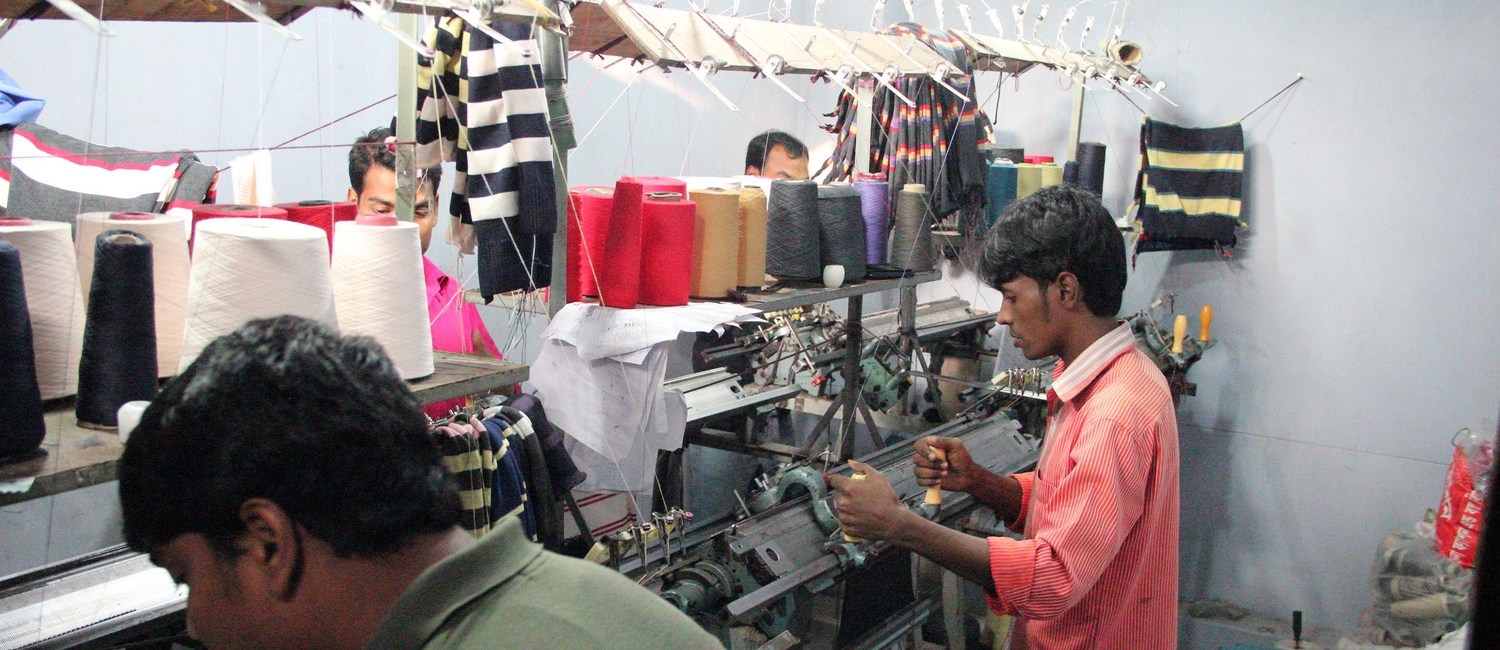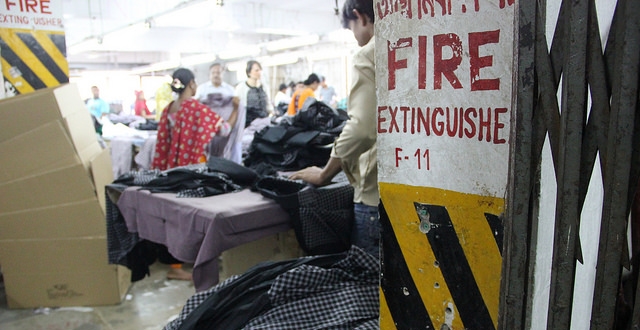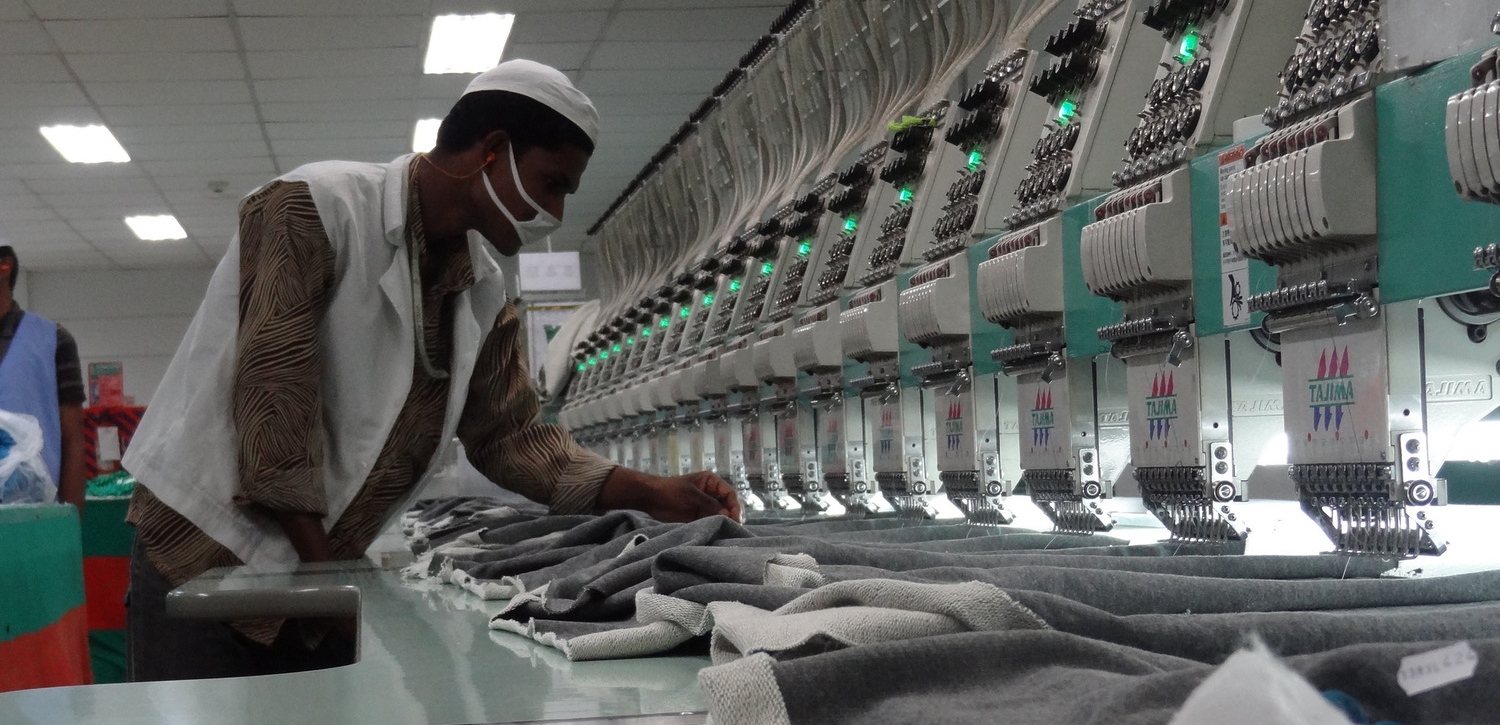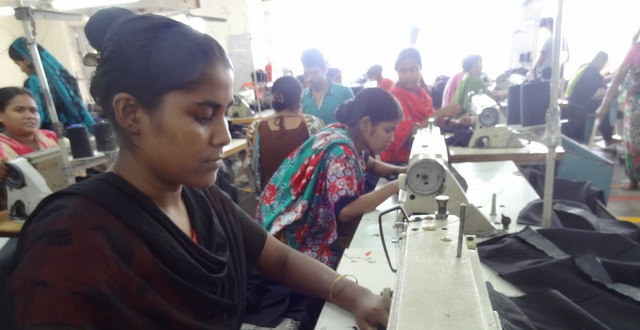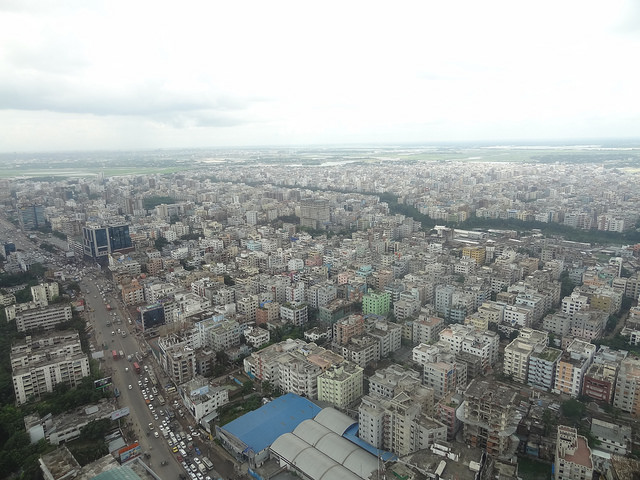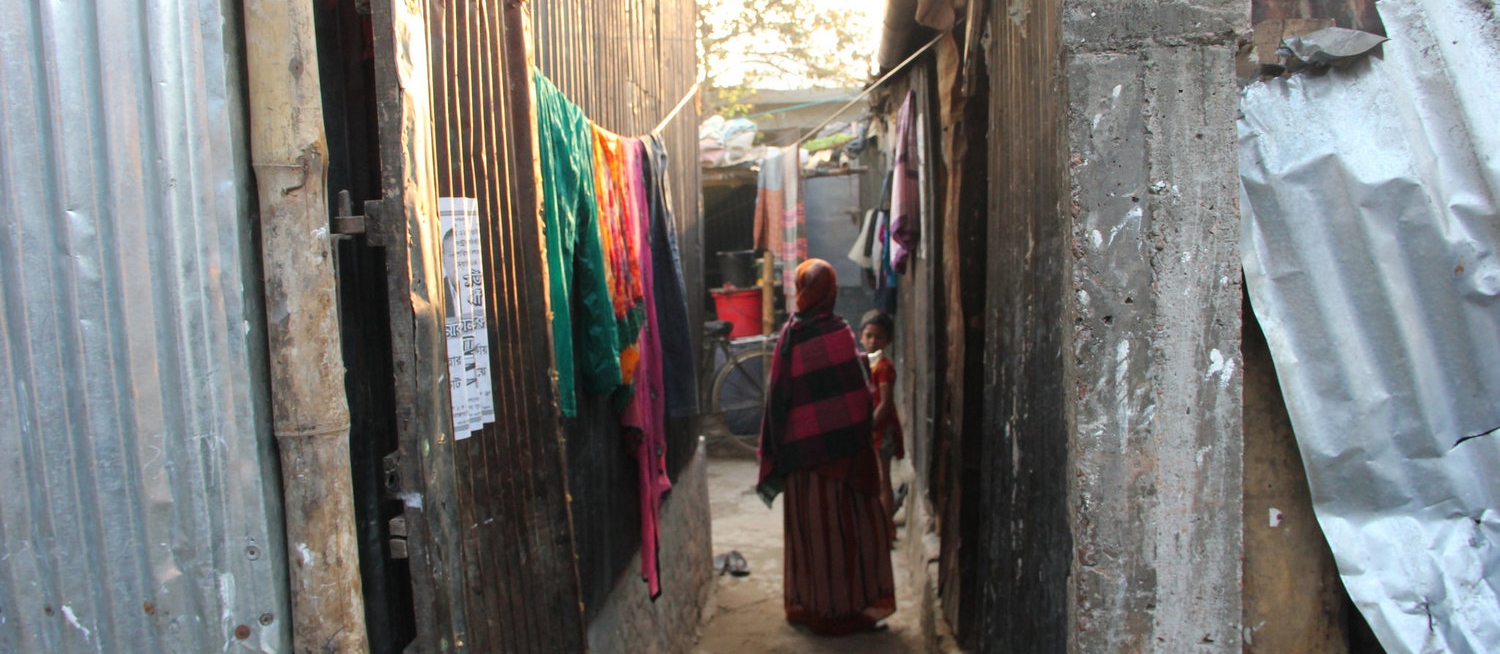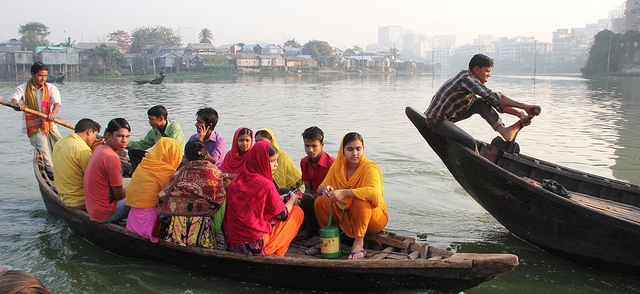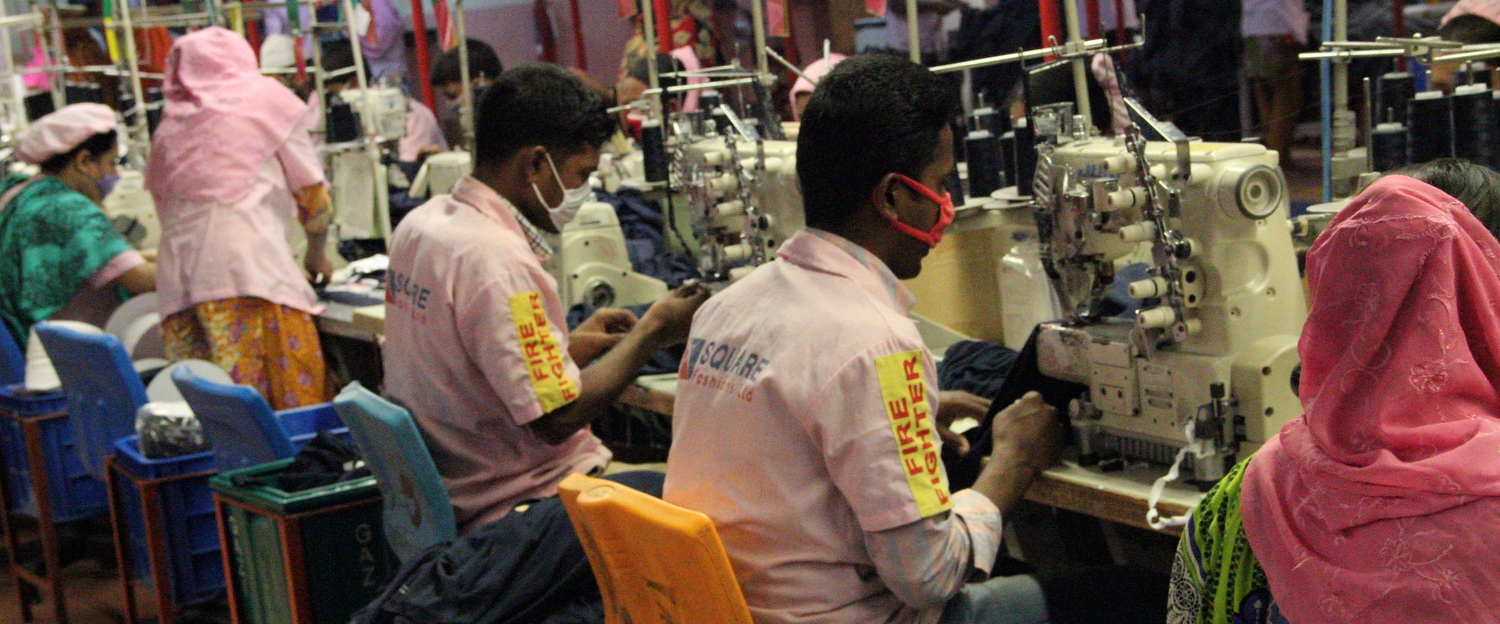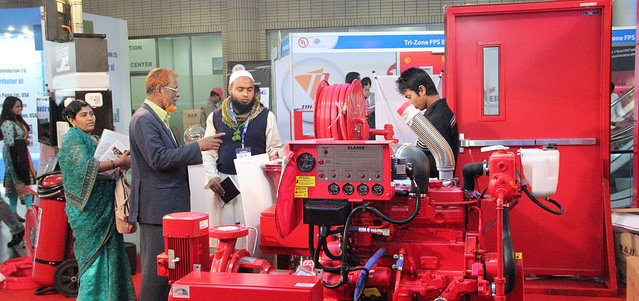Rana Plaza
April 4, 2018
Two Years Ago – The Collapse
The Rana Plaza factory complex collapsed in April 2013, killing more than 1,100 garment workers in Bangladesh. The tragedy brought renewed attention and pressure to the longstanding debate about the responsibility of multinational apparel brands to protect the rights of workers in their supply chains. While the garment sector has been a boon to Bangladesh’s economic growth over the last 35 years, the collapse of Rana Plaza highlighted failures in three key areas:
- Business practices: A significant portion of the supply chain in Bangladesh is comprised of factories that do not maintain direct financial relationships with American and European brands and retailers in their business operations, but that nonetheless produce garments for these companies. This system of “indirect sourcing” – subcontracting without transparency or oversight – has helped Bangladesh become the second largest garment-producing country in the world and the go-to destination for high volumes of low-cost clothing. But the lack of transparency and oversight, coupled with extremely tight profit margins in lower tier factories, increase risks for workers.
In the “hub and spoke” model, large registered factories receive orders from foreign brands and then subcontract production to a network of smaller, often substandard facilities that are invisible to regulators, buyers, and consumers.
While this system makes sense from a business perspective, it increases risks for workers, especially in the spoke factories.
- Governance: The government of Bangladesh should be the principal regulator of the garment sector. But the government lacks the political will, technical capacity, and resources necessary to protect the basic rights of its own workers. Bangladesh ranks at or near the bottom across all measures of good governance. At the time of the collapse, the government had yet to enact much-needed labor law reform or to investigate and prosecute the high-profile disappearance of a well known union leader. This has left most regulatory functions up to the leading trade associations and foreign brands.
- Infrastructure: Bangladesh’s infrastructure is among the least developed in the world. Power and gas shortages contribute to manufacturing delays, which often lead to excessive overtime and increased costs. The heavy use of generators was a major contributing cause in the collapse of Rana Plaza and electrical failings result in deadly factory fires.
The ruins of Rana Plaza where more than 1,100 workers died, May 13, 2013. Photo credit: Jaber Al Nahian
One Year Ago – Companies and Governments Respond
In the year following Rana Plaza, actors across the supply chain began to respond to the collapse. New factory safety and capacity-building initiatives emerged, more data about the sector came online, a charitable fund was formed to benefit victims of Rana Plaza, and the media continued to scrutinize the role of multinational companies in the supply chain. Through two parallel initiatives, the Bangladesh Accord on Fire and Building Safety and the Alliance for Bangladesh Worker Safety, multinational companies accepted responsibility to monitor factory safety at approximately 1,800 factories that are their direct suppliers.
-
Business practices: International buyers reiterated their rejection of “unauthorized” subcontracting, saying they had “zero tolerance” for this widespread practice. This approach ignores the important role that small and medium size subcontracting facilities have played and continue to play in the apparel sector in Bangladesh. As one report from the Dhaka Herald noted in November 2013, “[M]any companies take huge volume[s] of direct export orders from the international buyers and give sub-contract[s] to different factories as they are not able to produce such huge [volumes of] clothing orders and supply [them] in time as required by the international buyers.” Or, as one factory owner put it, “small factories support the big factories.”
In the fall, the Alliance and Accord published a factory list of their members’ suppliers (see the Accord and Alliance lists). But the total number of factories on these two lists was approximately 1,800. This is less than one-third of the overall number of production units in the export sector and many of the highest risk factories fall outside of their monitoring programs. In November 2013, the government attempted to increase regulation of subcontracting facilities by requiring them to join one of the country’s two apparel trade associations. But concerns about low levels of compliance among this group of “unregistered” factories reportedly caused the trade associations to actually restrict membership for fear of bringing substandard factories into their ranks.
Read our report, published in April 2014, that details the complex and opaque nature of the apparel business in Bangladesh.
Learn more about the report’s authors, Sarah Labowitz and Dorothée Baumann-Pauly. Connect with Sarah on Twitter.
- Governance: Three months after Rana Plaza, on July 15, 2013, Bangladesh’s parliament finally enacted changes to the Bangladesh Labor Act to include several provisions to improve workplace safety. The government also issued a National Tripartite Plan of Action on fire safety and structural integrity that identified many of the issues that are relevant for governing apparel production. Many of its targets remain unmet.
The move to form the Accord and the Alliance was significant because it represented the first time that many of the largest global apparel brands and retailers signaled their intention to work together to define and implement common standards for factory safety and to monitor performance against these standards. However, these initiatives target a limited portion of the export sector and exclude some of the riskiest factories.
- Infrastructure: Infrastructure remained weak. The international community continued to focus on worker empowerment, training programs, and strengthening the government’s capacity to conduct inspections. These are important objectives, but they do not address the root cause of many factory fires and building collapses, nor the overall cost increases presented by weak transportation networks or poor electrical delivery and gas shortages.
Today – The True Depth of Problems Emerge
The second anniversary of Rana Plaza is on April 24, 2015. What’s changed in the apparel sector in Bangladesh in the last two years?
-
Business practices: The fundamental need for subcontracting to support high volumes of very low-cost clothing has not changed. Many people in the industry talk about the promise of consolidation — big factories getting bigger by buying up smaller factories and moving to higher-standard, purpose-built facilities. This is surely happening at the top of the industry. But this kind of consolidation will not eliminate subcontracting. In fact, there is a risk of widening the gap in a “two-speed” economy, with a network of subcontracting factories driven further underground and out of the site of regulators. The question all brands should be asking themselves is not how to stamp out subcontracting, but how to do subcontracting well.
The true size of the sector also is beginning to come into focus. On the first anniversary of Rana Plaza, the best estimates put the number of factories between 5,000 and 6,000. Over the last year, The NYU Stern Center for Business and Human Rights has analyzed the five publicly available factory databases. When we combined the lists and cleaned up the duplicates we found 7,179 unique entries suggesting that the total size of the sector is larger than previously imagined. The data doesn’t tell a complete story — the databases include factories that are no longer operational and exclude many high-risk factories that are not registered on any official list. We are mapping the list of registered factories and beginning to identify “hot spot” concentrations of garment production across Bangladesh. This will form the basis of an on-the-ground survey that will allow us to estimate the true size of the export sector.
This map, created by the Stern Center for Business and Human Rights, shows where manufacturing facilities registered with the leading trade export association, brand initiatives and the government’s department of factories are clustered around Bangladesh’s capital city Dhaka. Map created using MapBox.org by Nayantara Banerjee.
- Governance: American and European brands continue to pursue an aggressive strategy of inspections for the approximately 1,800 direct suppliers for which they have accepted responsibility through the Accord and the Alliance. The Alliance co-hosted a fire safety expo in Dhaka in December 2014. But the question remains: who pays for the upgrades that the inspections reveal are necessary? Despite initial promises, only one brand, VF Corp, has put money on the table to pay for remediation. Only the best and most well capitalized factories will be able to afford the average estimated $250,000 cost of repairs. But there are many factories without these resources or access to financing, including in Accord and Alliance members’ supply chains, and certainly in the wider universe of factories.
The Rana Plaza Donor Trust Fund established to benefit the families of victims of Rana Plaza is getting close to its goal of $30 million. But as the Daily Star pointed out on April 19, 2015, charity is not the same as compensation and the law still does not provide minimum standards for compensation for victims of industrial accidents. The Bangladesh Legal Aid and Services Trust continues to pursue accountability through a legal case filed in the days immediately following the collapse. The High Court held proceedings during the week of April 20, 2015 focused on government ministries’ obligations to provide court-ordered documentation related to the collapse.
- Infrastructure: In June 2014, the Bangladesh Garment Manufacturers & Export Association signed a memorandum of understanding with Orion International Holding Company to construct a “garment village” in Gazaria, about two hours south of central Dhaka. The Chinese company will develop land, roads, power plants and purpose-built factories on 470 acres of land, at an estimated cost of $1.2 billion. It will make the facilities available for sale to members of the two trade associations. Yet many small and medium-sized factories are not members of the trade associations and will not have access to these facilities.
In November 2014, Bangladesh Bank announced the availability of low-cost financing for construction of housing for garment workers. Availability of usable land remains a challenge for meeting the urgent need for more and better worker housing. International financial institutions have yet to announced concrete plans to address underlying weaknesses in transportation and electrical delivery, though the World Bank and Bangladesh agreed in a meeting on April 17, 2015, “to do more to develop the country’s transport and energy infrastructure.”
A boy picks over the rubble of Rana Plaza, February 2014. Photo credit: Bishawjit Das.
The Way Forward – Shared Responsibility
The collapse of Rana Plaza and the deaths of more than 1,100 garment workers raised a longstanding question for the international community: how to ensure that jobs at the farthest ends of the global supply chain are safe and dignified? Since the mid-1990s, the prevailing model for solving the problem of poor working conditions has been for international brands to police their primary suppliers. Under this model, the governments of manufacturing destinations have failed to protect the rights of their workers; and brands and top-level suppliers engage in a cat-and-mouse game determining responsibility for compliance. Rana Plaza is a stark illustration of the limits of the policing model. Too many factories producing for the export market fall outside of any system of oversight. Solving the problem of poor working conditions will require shared responsibility among international brands, their primary suppliers, governments, civil society, unions, and financial institutions. It should include these elements:
- Tackle the most difficult areas of business and policy at the root of poor working conditions. In Bangladesh these include: the close relationship between business and government, the role of the trade associations in regulating their members, lack of a dedicated ministry for garments, challenges in clarifying property rights and gaining access to usable industrial land, funding for major infrastructure upgrades in power and transport, high interest rates, limits on access to capital and , legitimizing the role of small and medium-sized subcontracting factories, setting and enforcing standards for safety and working conditions in small and medium-sized factories, and closing or moving factories in high-risk areas. These are fundamental issues for a more sustainable garment sector and none of them is addressed by the current focus on inspections of a narrow group of factories at the top of the sector.
- Establish a process to develop a roadmap with recommendations. Bangladesh’s manufacturing sector needs recommendations for truly practical actions that would result in better fire and building safety, more oversight and greater efficiency. A taskforce could be formed with working groups dedicated to each of the most urgent challenges, including local and international experts charged with developing recommendations within a set period of time – ideally less than a year. This would build on the successful model employed by the city of Detroit in combating blight as the city works towards renewal.
- Put a price tag on the recommendations and develop a formula for shared responsibility for paying it. The task force should estimate the costs of its recommendations and identify a total price tag for a safe and more sustainable garment sector. The task force should propose a formula, based on export volumes and other factors, to share these costs among local manufacturers, international buyers, development agencies, philanthropic organizations, the government of Bangladesh, and governments from buying countries. A donor conference could be held to encourage diverse funders to commit at the same time to underwrite the significant costs of upgrading and overseeing the entire garment sector.
- Develop metrics to allow consumers to reward brands with sustainable supply chains. Organizations like Consumers Union and the Fair Labor Association should develop indicators to help consumers make informed decisions about where to shop for clothes. As Bangladesh’s garment sector grapples with how it will protect the workers that make it the second largest exporter of clothing in the world, systematically tackling the root causes of the risks to human rights, developing a formula for truly shared responsibility, and empowering consumers will pave the best path forward.



